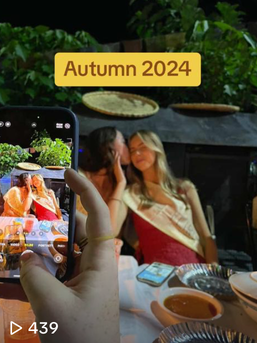Studentblogg
Studentene forteller om hverdagsliv, reiser, studier og opplevelser fra de ulike studielandene!
Filtrer
Vi kunne ikke finne noen resultatet som matcher filtreringen din.
Studentene forteller om hverdagsliv, reiser, studier og opplevelser fra de ulike studielandene!
Vi kunne ikke finne noen resultatet som matcher filtreringen din.


Nysgjerrig på hvordan det er å studere i utlandet?
Få et innblikk i studentenes opplevelser i de ulike studielandene! Hvert semester tar studentene over kontoen vår på TikTok og Instagram.
Ta testen
Finn det perfekte studiet basert på det som er viktig for deg.
Kom i gang
Klar for å se verden? Send inn en uforpliktende søknad, så tar vi kontakt med deg og hjelper deg på veien videre.